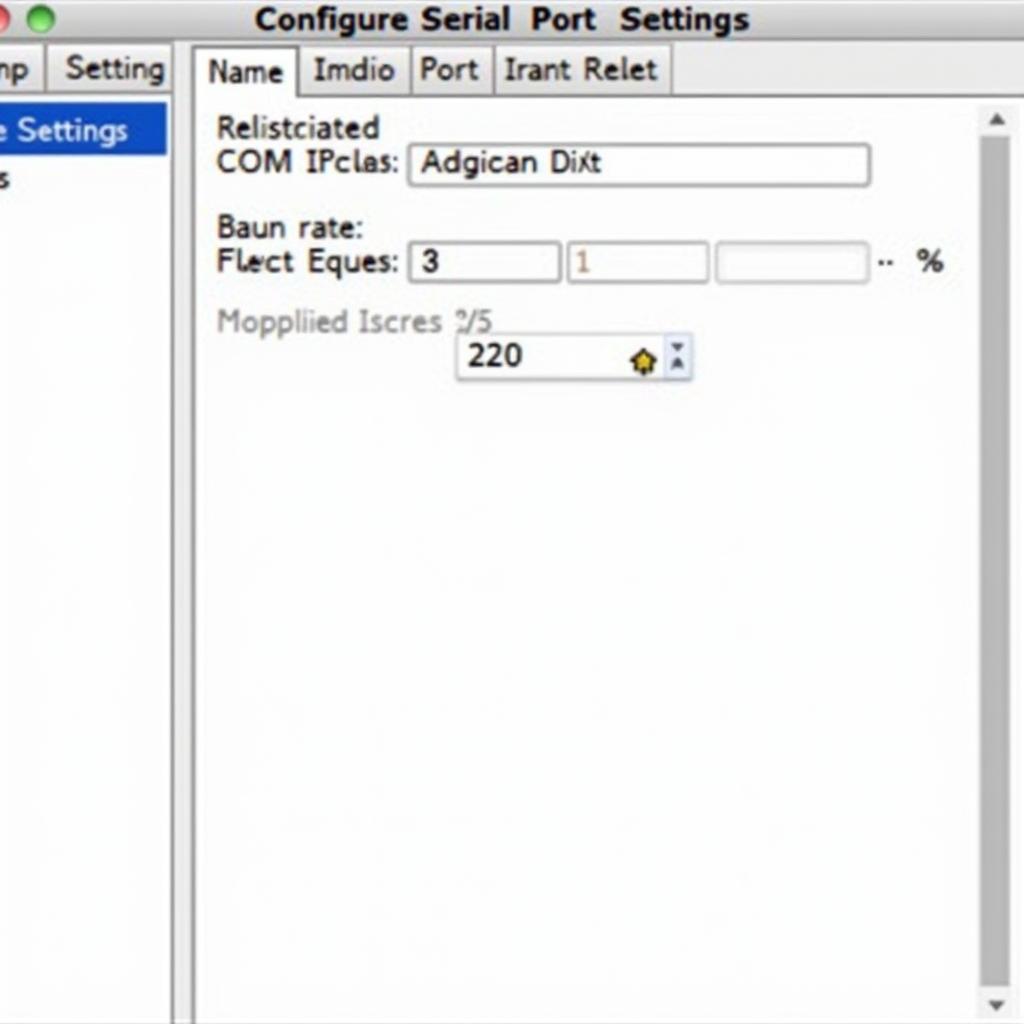Connecting your vehicle’s OBD2 port to a serial port on your computer might seem like a journey back in time, but it’s still a relevant and powerful method for vehicle diagnostics. This article will guide you through everything you need to know about OBD2 to serial port cables, from understanding their function to choosing the right one for your needs.
Why Use an OBD2 to Serial Port Cable?
While USB-based OBD2 scanners have become the norm, serial port connections still hold their own, especially for certain applications:
- Legacy Vehicles: Older cars, particularly those manufactured before the widespread adoption of OBD2 in 1996, may only have a serial diagnostic port.
- Specialized Software: Some professional-grade diagnostic software and tuning applications require a direct serial connection for full functionality.
- Data Logging and Analysis: Serial connections offer a reliable and straightforward way to capture raw data streams from your vehicle’s ECU for in-depth analysis.
Choosing the Right Cable
Finding the right OBD2 to serial port cable requires understanding your vehicle and your needs. Here’s what to consider:
- Vehicle Compatibility: Ensure the cable supports your vehicle’s specific OBD2 protocols. Not all cables are universally compatible.
- Serial Port Type: Determine if your computer has a 9-pin (DB9) or 25-pin (DB25) serial port and select a cable with the corresponding connector.
- Chipset: The cable’s chipset influences its performance and compatibility with various software. Look for reputable chipsets like the FTDI FT232RL for reliable operation.
- Cable Length: Choose a cable length that provides comfortable reach from your vehicle’s OBD2 port to your computer without being excessively long.
Setting Up Your Connection
Once you have the right cable:
- Connect the Cable: Plug one end of the cable into your vehicle’s OBD2 port and the other end into your computer’s serial port.
- Install Drivers: If required, install the appropriate drivers for your cable’s chipset.
- Configure Software: Open your chosen diagnostic software and configure the communication settings to match your serial port (COM port number, baud rate, etc.).
 Configuring OBD2 Software for Serial Port
Configuring OBD2 Software for Serial Port
Troubleshooting Tips
Encountering issues? Here are some troubleshooting steps:
- Check Connections: Ensure both ends of the cable are securely connected.
- Verify Drivers: Confirm that the correct drivers for the cable’s chipset are installed.
- Adjust Software Settings: Double-check the communication settings in your software to match your serial port’s configuration.
- Test with Another Device: If possible, try connecting the cable to a different computer or serial device to isolate the issue.
Beyond Basic Diagnostics
OBD2 to serial port cables unlock a world beyond basic code reading. With the right software, you can:
- Log Real-time Data: Capture data streams from various sensors, allowing you to monitor engine performance, emissions, and more.
- Analyze Vehicle Behavior: Use data logging software to diagnose intermittent issues, analyze driving habits, and fine-tune vehicle performance.
- Reprogram ECUs: Some advanced users utilize serial connections for ECU flashing and custom tuning with specialized software.
“For serious DIY mechanics and enthusiasts, a direct serial connection offers unparalleled control and insight into a vehicle’s inner workings.” – John Peterson, Automotive Engineer
Conclusion
While seemingly outdated, OBD2 to serial port cables offer valuable functionality, especially for users working with legacy vehicles, specialized software, or those seeking in-depth vehicle data. By understanding the key considerations for cable selection, setup, and troubleshooting, you can leverage the power of this classic connection for effective vehicle diagnostics and analysis.
Remember, when working with vehicle electronics, always refer to your vehicle’s service manual and proceed with caution to avoid potential damage.
FAQs
-
Can I use any serial cable for OBD2 communication?
No, you need a dedicated OBD2 to serial port cable that converts the signals between the two interfaces. -
My computer doesn’t have a serial port. What are my options?
You can use a USB to serial adapter to create a virtual serial port on your computer. -
What software can I use with an OBD2 to serial port cable?
Various free and paid OBD2 software options support serial connections. Look for software compatible with your vehicle’s make and model. -
Is it safe to use an OBD2 to serial port cable?
Yes, it’s generally safe as long as you use a quality cable and reputable software. Always disconnect the cable when not in use. -
Can I program my car with an OBD2 to serial port cable?
While possible with specific software and expertise, ECU programming is a complex procedure. Proceed with caution and consult your vehicle’s documentation.
For additional information on OBD2 tools and techniques, explore these related articles:
- OBD2 Putty: Learn how to use the versatile Putty terminal emulator for advanced OBD2 communication.
- Using Wireshark with OBD2 to USB Cable: Dive deeper into OBD2 data analysis by capturing and inspecting network traffic with Wireshark.
- Serial Port RS232 DTC for OBD2: Understand the relationship between serial communication and diagnostic trouble codes (DTCs).
Need help choosing the right OBD2 tools or have specific diagnostic questions? Our team of automotive experts is here to assist you 24/7. Contact us via WhatsApp: +1(641)206-8880 or Email: [email protected].